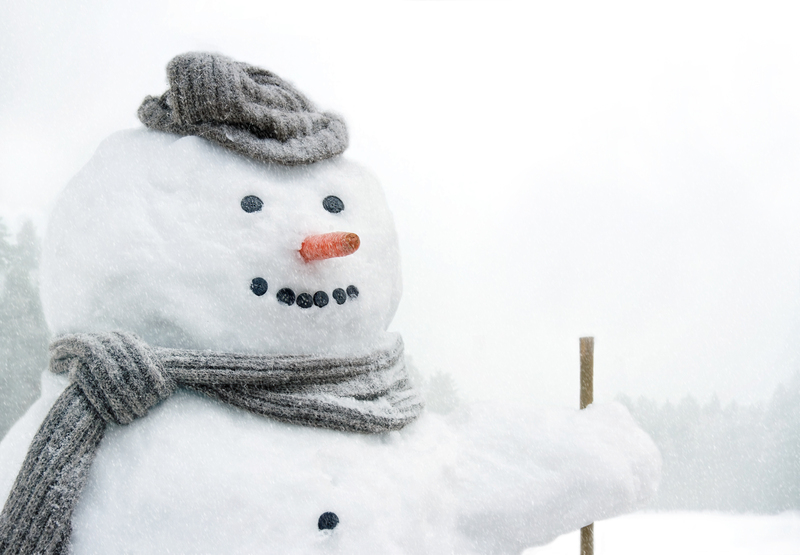Why Moving a Piano is Not a DIY Task You Should Attempt
Posted on 24/05/2025
Why Moving a Piano is Not a DIY Task You Should Attempt
Have you ever wondered if moving a piano can be a do-it-yourself project? While many homeowners are tempted to tackle large tasks on their own to save money, moving a piano is a complex challenge that goes far beyond shifting furniture. In this comprehensive article, discover the reasons why professional piano movers should always be your go-to solution.
The True Complexity of Piano Relocation
Pianos are more than just hefty pieces of furniture--they are intricate musical instruments with a sensitive balance of parts. Whether you own an upright, baby grand, or grand piano, each type presents unique transport challenges.
Understanding the Weight and Size Factor
- Upright Pianos can weigh between 300 and 800 pounds.
- Grand Pianos may exceed 1,200 pounds and stretch beyond 7 feet.
- Moving a piano even a short distance can be overwhelming due to the sheer weight and awkward shape.
Attempting a DIY piano move without specialized equipment or enough helpers poses a significant risk of property damage and personal injury.
Why is a Piano So Difficult to Move?
It's not just about the weight. Inside every piano lies a complex network of fragile parts. A sudden movement can disrupt the tuning or cause irreparable damage to the strings, pedals, or hammers.
- Delicate Mechanisms: Over 10,000 moving parts inside some pianos make them vulnerable.
- Imbalanced Loads: The distribution of weight is uneven, increasing the risk of tipping or dropping during transport.
- Size Constraints: Tight corners, narrow staircases, and elevators complicate the moving process significantly.

The Dangers of Moving a Piano Without Professionals
Risk of Injury
Lifting a piano incorrectly can cause severe injuries such as:
- Back strains and herniated discs
- Broken bones or crushed fingers and toes
- Muscle tears or sprains
Even with a group of physically strong people, the risk of accidents is high, especially if you lack knowledge of proper moving techniques.
Potential for Property Damage
Pianos are notorious for scratching walls, gouging floors, and damaging doorways when maneuvered improperly. Repairing home damage or replacing a damaged piano can easily exceed the cost of hiring professionals.
- Scratches and Dents: The exterior finish can be damaged, causing expensive repairs or reducing the piano's value.
- Structural Harm: Dropping or bumping a piano can crack the soundboard, break legs, or damage internal mechanisms.
- Flooring: Rolling a piano across hardwood or carpet can discolor or irreparably scratch surfaces.
High Likelihood of Damaging the Instrument
Pianos are intricately designed for sound and playability. Mishandling, even briefly, can throw off their intricate balance, resulting in costly tuning or repair needs. DIY efforts often lead to:
- Shifted inner workings
- Broken strings or damaged pedals
- Loss of acoustic quality or even total non-functionality
Why Professional Piano Movers Are the Safe Choice
Specialized Knowledge and Equipment
Professional piano movers bring the essential expertise, equipment, and manpower required for a secure piano relocation:
- Piano Dollies: Heavy-duty equipment designed to support a piano's weight safely.
- Protective Padding: Cushions and covers to prevent cosmetic and structural damage.
- Straps and Ramps: Tools for lifting and stabilizing during stairs, loading, and unloading.
- Disassembly Skills: Knowledge to remove legs, pedals, and other parts for safer transport.
Insurance and Liability Protection
Reputable piano moving companies carry insurance to protect against accidents and mishaps. If you attempt a DIY piano move, you are personally liable for any damages or injuries that occur--a significant financial and legal risk.
Safe Navigation of Challenging Environments
- Stairways--professionals know how to angle and secure a piano for safe ascent or descent.
- Narrow Hallways--removal of obstacles, careful turning and tilting strategies.
- Uneven Terrain--use of ramps and spotters for outdoor moves.
Myths About DIY Piano Moving
There are several misconceptions about moving a piano without professional help. Let's address the most common myths:
“It's Just Like Moving a Sofa”
Wrong! Unlike a couch, a piano's structure is fragile, and internal parts can be knocked loose or broken with a sudden jolt.
“A Few Strong Friends Are Enough”
The average piano's weight exceeds what most people can safely handle, especially when navigating stairs or tight spaces. Professional piano movers train specifically for these physical challenges.
“Rolling Is Safe With Wheels”
Small piano wheels are meant for minor adjustments, not transporting across distances, thresholds, or varied flooring types. Using these wheels often results in damage to both the piano and your floor.
“It'll Save Money”
Many unimpressed by professional costs are surprised by post-move repairs: broken tiles, gouged drywall, tuning issues, or worse, total instrument loss. The price of repairing a damaged piano far outweighs professional moving fees.
How Professional Piano Movers Ensure Safety and Quality
Comprehensive Assessment
Experts begin by evaluating the layout of both origin and destination spaces. This assessment includes:
- Measuring doors, staircase width, and ceiling height
- Identifying obstacles or difficult passages
- Strategizing the best moving route
Precision Preparation
- Padded covers and wrap to shield delicate lacquer and wood finishes
- Careful removal of legs, music stands, or pedals if needed
- Ensuring all tools and hardware are safely stored during transit
Safe Loading and Transportation
- Use of lift gates and ramps to avoid dangerous lifts or drops
- Securing the piano inside the vehicle to prevent shifting
- Transport vehicles equipped with climate control for temperature-sensitive instruments
What to Expect When Hiring Piano Moving Experts
Step-by-Step Process
- Initial Consultation: Discuss your piano type, location, and destination.
- Site Assessment: Movers inspect both locations for obstacles and access points.
- Preparation: Disassembly, padding, and wrapping.
- Transport: Carefully moving, securing, and transporting the instrument.
- Reassembly: Professional reassembly and positioning in the new location.
Post-Move Care
Once relocated, pianos often need a professional tuning due to minute shifts caused by movement and environmental changes. Many reputable piano movers can coordinate these services for a seamless transition.
Cost vs. Value Analysis
While hiring professionals might seem more expensive upfront, compare this to the potential loss from a damaged piano, home repairs, or medical bills. You gain peace of mind and ensure your instrument's longevity and reliability.

FAQs About Moving a Piano
Can I move my upright piano by myself with a few friends?
While it's technically possible, it's highly discouraged due to the risk of injury and damage. Without proper equipment and expertise, you're jeopardizing your piano and personal safety.
How do professional movers move a grand piano?
Typically, experts remove the legs and pedals, wrap each part with padding, and use a special piano skid board for safe navigation. The pieces are reassembled at the new location by trained professionals.
Is it ever okay to use a moving company that doesn't specialize in pianos?
General movers lack specialized training and equipment for pianos, increasing the risk of costly mistakes. Always choose a service with a proven track record of safe piano relocations.
How much does it cost to move a piano professionally?
Costs can range from $150-$500 locally to several thousand dollars for long distances or complicated moves involving stairs and tight spaces. However, these prices pale in comparison to the potential repair or replacement cost from a DIY mishap.
Conclusion: Leave Piano Moving to the Experts
Attempting a DIY piano move is fraught with dangers--for you, your home, and especially your beloved instrument. Pianos represent an investment both financially and sentimentally. They deserve the care, expertise, and protection that only professional piano movers can provide.
Remember:
- Safety first-protect your health and your property.
- Preserve your piano's sound and value-expert movers prevent costly and sometimes irreparable damage.
- Save money and stress in the long run-avoid hidden repair costs by doing it right the first time.
If you need to relocate your piano, reach out to certified and insured piano moving specialists. It's the wisest, safest, and ultimately most cost-effective choice you can make.
```


